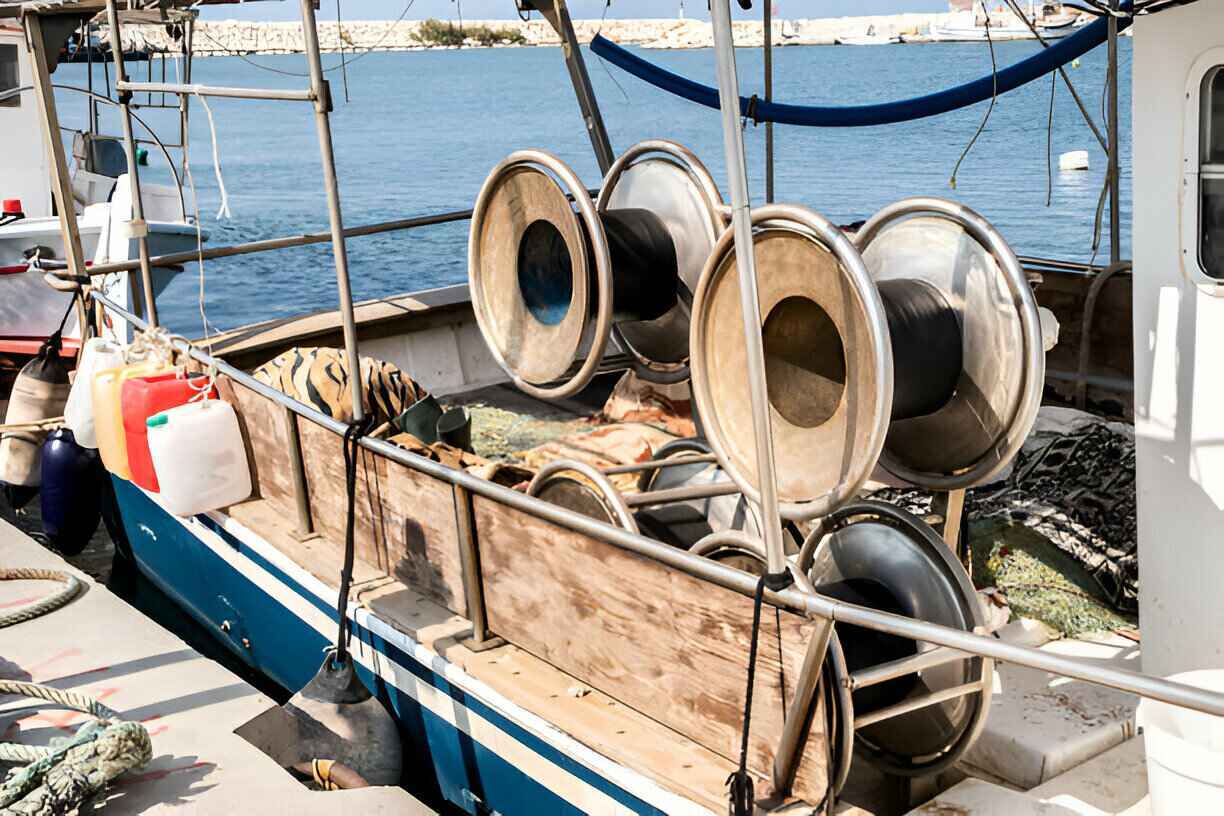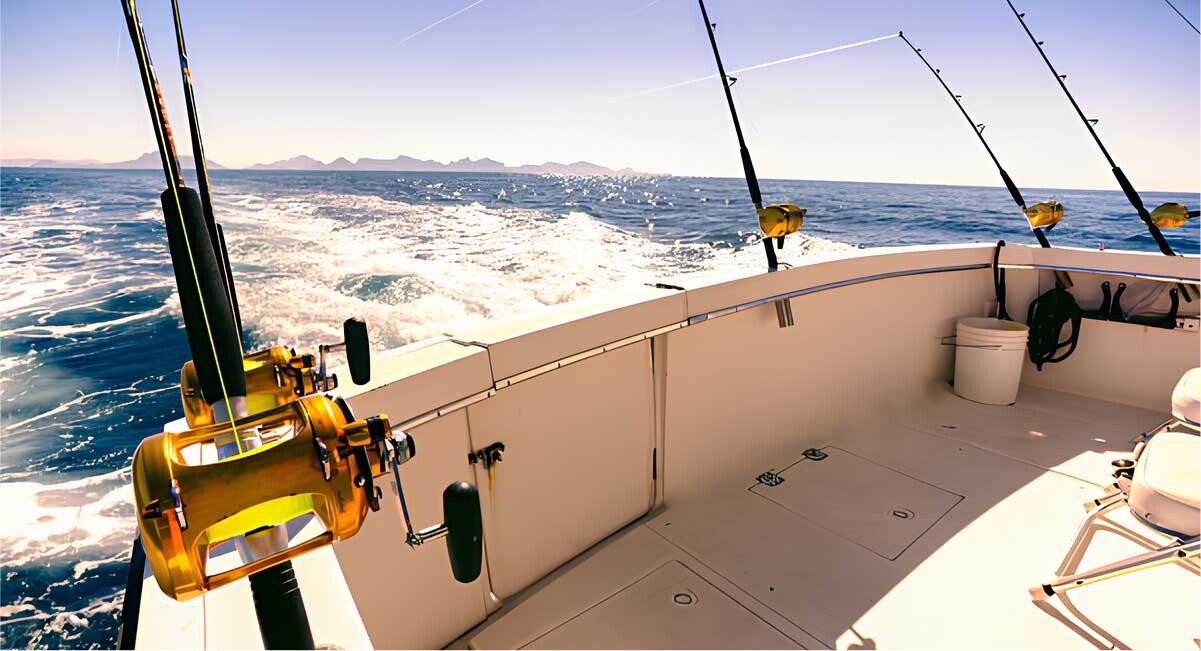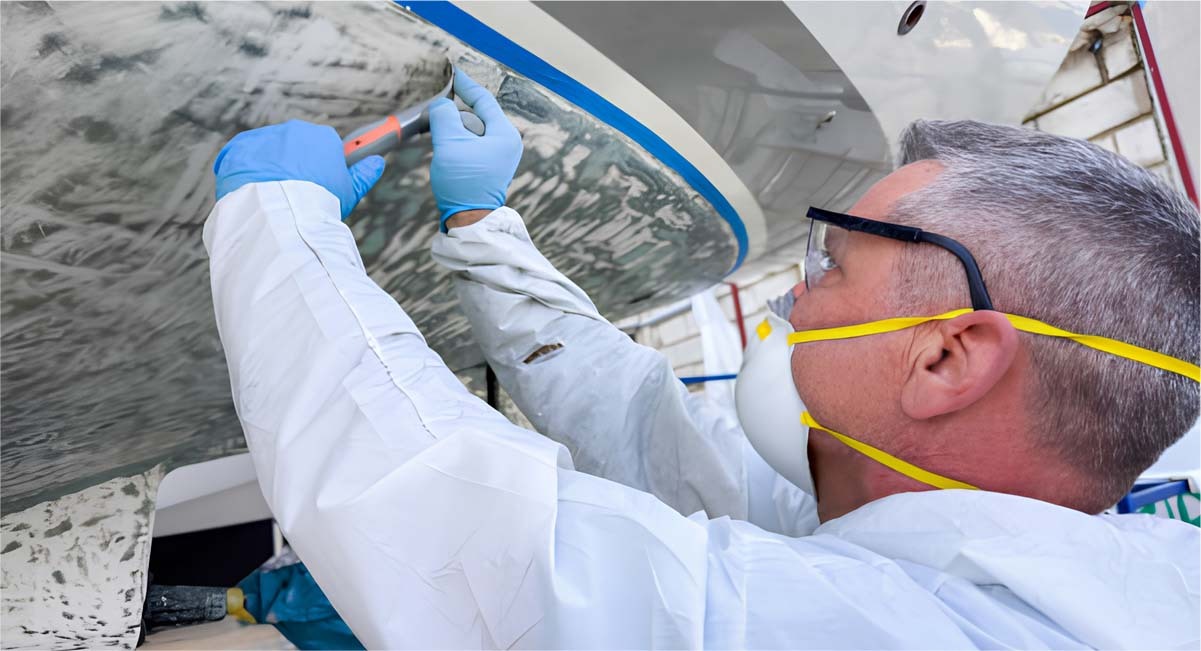What Are Divots on a Fishing Boat - Causes, Areas, and Repair Tips
As someone who has spent enough time around fishing boats, you have seen small dents, gouges, or shallow depressions in the hull or deck. These are what we call DIVOTS. These seem minor at first glance but actually are not and can tell a bigger story about the wear, usage, and even structural stress your boat is going through.
Understanding what causes divots, where they tend to show up, and how to properly repair them is more than keeping your boat looking good—it’s about safety, performance, and longevity. Whether they result from hard impacts at the dock, repeated gear drop, or trailer wear, these small blemishes can eventually lead to issues like water intrusion, gelcoat failure, or more extensive hull damage if left unchecked.
In this post, we’ll discuss about what divots really are, why they form in certain areas of your boat, and how professionals typically approach repair to restore both integrity and appearance. So, you can’t afford to skip this reading.
What Are Divots on a Fishing Boat?

iStock/varbenov
In boating, a divot means a small sunken spot or dip in the surface. These show up on fiberglass boats, aluminum boats, or other boat materials, not just a scratch; this kind of damage goes a bit deeper, it changes the boat’s smooth shape. You might find one on the hull, deck, or back part of the boat.
Technically, divots may involve:
- Compacted laminate matrix (fiberglass)
- Distorted panel geometry (aluminum)
- Loss of structural fairing (affecting hydrodynamics)
Divots differ from standard wear and tear, which manifests as surface-level abrasions, gelcoat discoloration, or oxidation due to UV exposure and water immersion. While wear and tear affect the finish uniformly over time, divots are isolated deformation zones typically resulting from direct impact or compression.
Unlike cracks, which often propagate under tension and indicate material failure across a stress line, divots are non-linear, non-penetrative dents that compress the laminate matrix or gelcoat layer without immediately breaching it. They can, however, serve as initiation points for delamination or hydrostatic intrusion if the resin matrix is compromised.
The most common locations for divots on a fishing boat include:
- The forward hull or bow entry point, where contact with submerged debris or wave slamming often occurs.
- The keel line, especially on trailer-launched boats, is where improper roller alignment or bunk compression can cause impact damage.
- The transom, where stress from outboard motors or transom-mounted accessories (e.g., downriggers, jack plates) may cause localized deformation.
- The deck, particularly near bait tanks, storage hatches, or recessed gear wells, where heavy gear is loaded or dropped.
- The chine edges, which are structurally complex and more susceptible to deformation during docking collisions or when rubbing against pilings under load.
Common Causes of Divots on Fishing Boats
When it comes to divots on fishing boats, their origins are often linked to direct external forces. Each cause affects the hull or structural components in different ways, leading to surface-level indentations or more severe material compromises.
1. Impact with Debris – Hitting rocks, logs, or another hard object
Boats often get divots from hitting hidden or floating objects. A fishing boat can slam into rocks, logs, or trash, that hit makes a dent in the hull. The pressure from the hit can damage the outer layer. This outer shell is usually made of gelcoat or resin.
If fixes are not made on the spot fast, cracks may form. Sometimes, parts of the hull can even start to peel away, bigger objects or fast crashes make the damage worse. The hull can end up with deep scrapes that don’t go away.
2. Trailer Loading/Unloading – Improper boat ramp techniques causing scrapes
Damage often happens during loading or unloading the trailer. If the boat isn’t lined up right or gets forced in, parts like the keel or transom might hit rough parts of the trailer. That includes rollers, bunkers, or anything that sticks out, it doesn’t take much.
Even light bumps, done over and over, can leave small dents in the gelcoat or hull. This gets worse if the ramp is steep or the ground isn’t smooth.
3. Dock Collisions – Bumping against pilings or other boats
Small crashes during docking or while turning in tight spots often cause divots. Boats hit pilings, dock edges, or even other boats. That happens when steering isn't right or when currents are strong. These bumps may seem minor, but they still leave marks.
Hard corners or rough materials can dig into the hull. The back of the boat, sides, and corners get hit most. These are weak points where dents often happen.
4. Fishing Gear Damage – Heavy equipment (traps, anchors) causing dents
Fishing gear can also do damage, traps, anchors, and ropes, when dropped or stored the wrong way, they hurt the surface. Tossing heavy stuff on the deck too hard makes dents.
This is a bigger problem for fiberglass boats, the weight pushes down. If it keeps happening or scrapes along the surface, marks appear. Sometimes, that pressure even leads to cracks or deeper damage.
5. Weather & Water Conditions – Repeated wave stress or UV degradation
Time and weather also play a big role. Wind, sun, waves, all of it wears things down. Rough water puts pressure on the same spots, those hits leave marks after a while. The sun weakens the gelcoat, then even small hits can leave dents.
If the boat sits out for too long without cover, the surface begins to break down. You’ll see small dips or dents, but later, it can weaken the boat’s structure too.
How Divots Affect Your Fishing Boat’s Performance?

istock/grandriver
Small marks on your boat might not look serious. But they can mess with how your boat works in big ways. You might be sailing for fun or thinking of selling your boat soon. Either way, knowing how these little dents affect your boat matters a lot.
1. Hydrodynamics – Disruptions in Water Flow, Reducing Speed & Fuel Efficiency
Water doesn’t flow right when the hull has dents, that throws everything off, and slows the boat down. The engine pushes harder to keep the same speed. That burns more gas. Over time, you’ll notice it’s not running like it used to. Longer trips use up better engines with more fuel efficiency and your boat just won’t feel the same.
2. Structural Integrity – Small Divots Can Lead to Bigger Cracks If Untreated
Divots might look like no big deal, but they can mess with your fishing boat’s structure if you ignore them. Water pressure and bumps hit the same spot over and over.
That tiny dent may grow and turn into a crack or even start peeling layers apart. That kind of damage weakens the body of the boat. Repairing them cost more, and safety can also take a hit. Fixing divots early keeps things from getting worse later.
3. Resale Value – Visible Damage Lowers Boat Marketability
Buyers don’t want boats with damage they can see. Even if the dent doesn’t change how the boat runs, it’s a warning sign. This makes them think something wasn’t looked after, that’s enough to drop the price fast. You may end up with less money than you expected. Keeping your boat smooth and clean makes it easier to sell, and for a better price.
How to Identify Divots on Your Fishing Boat?
Spotting divots early helps keep your boat in good shape, it also helps it move smoothly. Here’s how you can notice these small dents before they cause bigger problems.
Visual Inspection Tips
- Small dips in the surface: These look like round or oval spots that sink in a little. They often show up on the hull, deck, or back of the boat.
- Check where damage often happens: These spots include the front, back, and near the waterline.
- Watch for fine cracks near the dent: Little lines or breaks around a dip may point to deeper issues. These signs may mean the boat’s strength is being affected.
Common Signs and Symptoms
- Uneven ride: Your boat isn’t riding the same becasue divot messing things up. If it pulls to one side or feels harder to steer, that small dent might be changing how it moves in water.
- Strange sounds: Hear odd noises while you’re out like scraping or dragging. That might be the hull rubbing in ways it shouldn’t. A divot can mess with how water flows under the boat or even slow the propeller.
- Noticed water getting inside the boat? A small dent near the hull might be the reason. It could be letting water sneak past the outer coat and into the boat.
How to Repair Divots on a Fishing Boat?
Here’s how to do it yourself if the damage is light:
- Start by cleaning: Get rid of any grime or dirt around the spot, soap and water work well. After cleaning, dry the area fully, that way, the repair sticks the way it should.
- Prepare the Divot: Begin by gently sanding the divot's edges using 80-grit sandpaper. This helps the repair materials stick better and stops future peeling.
- Mix the Epoxy Resin: Next, mix the epoxy resin and hardener as per the repair kit's instructions. Measure carefully to get the right mix; this ensures proper hardening.
- Apply the Epoxy: Then, apply the mixed epoxy into the divot using a putty knife or scraper. Press it in firmly and make sure it's level with the surrounding surface.
- Smooth and Sand: After the epoxy dries, usually in 24 hours, sand the area smooth with finer sandpaper like 220-grit. The surface should feel smooth and match the boat's original finish.
- Reapply Gel Coat: If needed, apply a layer of gel coat over the repair to bring back the boat's shine. Let it cure, then lightly sand for a seamless look.
Preventing Divots on Your Fishing Boat

istock/mbbirdy
Boats look better and last longer when you stop damage before it starts. Try these simple ways to keep yours in great condition.
- Use Bumpers and Fenders When Docking: Bumpers and fenders help a lot while docking. They guard the sides of your boat during small bumps with other boats or docks. Good ones can soften the hit and stop dents or marks from forming.
- Proper Trailer Alignment: Make sure your trailer lines up right. Loading or unloading at the wrong angle can cause the hull to scrape. That’s often how chips and divots begin.
- Regular Hull Inspections: After sailing through rocky spots or trash-filled waters, take a quick look. Catching small cracks early can save you bigger repairs later. Use hull cover plate to reinforce vulnerable spots.
- Protective Coatings: A special coating can help, too. Pick one that blocks sun rays and keeps water out. It helps protect the finish and keeps the surface strong for longer.
Divots vs. Other Types of Boat Damage
It’s easy to confuse divots with other common types of damage. Let’s clarify:
|
Damage Type |
Description | Severity |
| Divots |
Shallow dents or depressions, usually cosmetic |
Low to Medium |
| Cracks |
Sharp breaks or splits, often stress-related |
Medium to High |
| Blisters |
Bubbles or raised spots caused by water intrusion |
Medium |
FAQs
Do All Fishing Boats Have Divots?
Not all fishing boats have divots, but they are common in boats that have been used frequently in rough conditions or have experienced impacts. Divots can occur due to collisions with debris, dockings, or even from fishing gear. Regular maintenance and careful handling can minimize their occurrence.
Can Divots Affect My Fishing Boat's Value?
Yes, divots can lower your fishing boat's value. Visible damage, even if minor, may give potential buyers the impression of neglect or poor maintenance. While small divots might not affect performance significantly, they can make the boat less marketable, leading to a reduced resale price or longer selling time.
Final Thoughts
Divots may seem like small imperfections, but they can carry big consequences. From reduced fuel efficiency to potential hull damage, they’re not to be taken lightly.
By now, you should know, what divots on a fishing boat are, what causes them and how to prevent them, and way to prevent them and fix them.
Don't wait for a small divot to become a major problem. Take action today, give your boat a thorough check or consult a marine professional to keep it in top shape for many trips to come.
Need expert advice? Call our marine specialists at 270-618-520 for personalized guidance and proven solutions for your fishing boat.
Posted by Brian Whiteside


